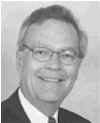|

|
Where
There's Smoke...
Fighting
Fires in Virginia
Down
in Richmond, Carytown’s Fire Station #12 boasts
the only fire pole left in the city, according to
the Richmond
Times-Dispatch. Those brass cylinders have
gone the way of Dalmatians and clanging bells in the
fire fighting business. The first poles, made of
polished wood, were installed in New York City in
1873 when property was scarce and firemen always
bunked upstairs. Fire stations built in the last 50
years, however, tend to be on one floor or, if they
are multi-level, use slides to avoid injuries.
Apparently,
sliding down a fire pole is a dying art. Individuals
need to hold on with their hands, but don’t
squeeze, and use their legs as a brake. They also
should avoid wearing shorts and short sleeves, Wayne
Newcomb, a longtime firefighter at the Carytown
station told the Times-Dispatch.
In
Virginia, more than 400 city, county and district
fire agencies report their statistics to the Virginia
Department of Fire Programs, the state agency
that oversees training and certification of the
commonwealth’s firefighters. Last year 31,945
fires were reported in the Old Dominion, resulting
in 100 civilian deaths, 300 firefighter injuries and
more than $500 million in property loss.
Despite
the risks involved, competition is fierce for those
who wish to fight fires for pay, and there are
thousands who do it for free at volunteer
departments. In Virginia, minimum qualifications to
become a firefighter include an age between 18 and
21, depending on the agency (some also have a
maximum age ranging from 30 – 45); a high school
education or a GED (some departments have higher
education requirements); a clean criminal record;
excellent physical and mental health; and a valid
driver’s license and a satisfactory driving
record.
Applicants
are required to take written and physical exams,
which vary from department to department. The
written exam tests the ability to read and
understand maps and floor plans, among other skills.
In the physical exam, tasks include: dragging a
dummy; dragging a hose; climbing stairs; climbing
through a tunnel; raising and climbing a ladder; and
jumping over a wall. Of course there is an oral
interview, and some municipalities require a
psychological exam, which consists of written tests
or an interview with a psychologist.
While
we associate firefighters primarily with fires, they
are trained to respond to a number of emergencies.
They are often the first to arrive at car accidents,
gas leaks and natural disasters. They respond to
everything from airline crashes to water and ice
rescues -- to emergency childbirth assistance. They
often do “well-being” checks when someone has
not been seen by neighbors over a period of time.
Most
fire departments train their recruits in 10-week to
five-month sessions, sometimes at special fire
academies. Training subjects include: Level I and
Level II Firefighter credentials; hazardous
materials training; fire department history; medical
response, EMT or paramedic qualification;
hydraulics; leadership and stress control classes;
training drills; general administration and
computers; and physical fitness.
A
number of organizations in Virginia support
firefighters. One, the Virginia
State Firefighter's Association, includes
legislative lobbying among its activities for
volunteer fire departments in particular. Among its
successes, the association helped pass state
regulations making it illegal to run over a fire
hose and allowing toll-free passage of fire
equipment on state-operated toll bridges.
Despite
risky work and the demanding physical and emotional
requirements, firefighters find time to enjoy the
lighter side of life. The Manassas Volunteer Fire
Company has gained some celebrity through a Web site
known as www.manassasfire.com.
The site is run by Jeff Lenard, and his colleague,
Michael Lesnick, has created videos that promote an
action-hero image of the Manassas firefighters. He
attaches a camera to the side of a truck when they
go out on a run, and then dubs in rock music to the
resulting video, reports the Washington Post
(“Manassas Firefighters: Action-Hero Rock
Stars,” April 8, 2007). The videos have titles
such as “Manassas Fire – You Can’t Stop Us
Now” and “Engine Company 501 (Take 2).” The
latter is so popular it has been downloaded 7,000
times! “They get you motivated to volunteer,”
Donald Holman, the department’s volunteer chief
told the Post. “They get you going when the
music starts up.”
NEXT:
School Days:
Governing the Academy in Virginia
--
August 13, 2007
|
|
